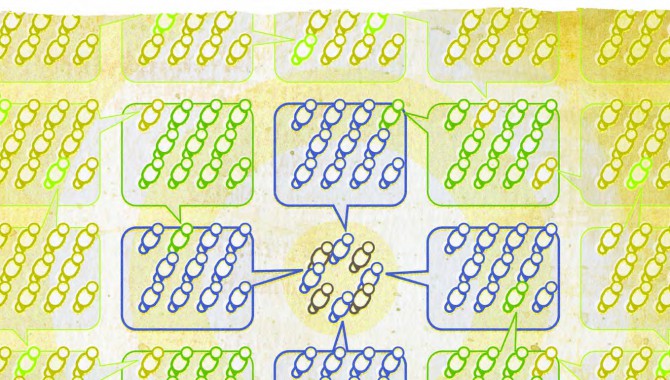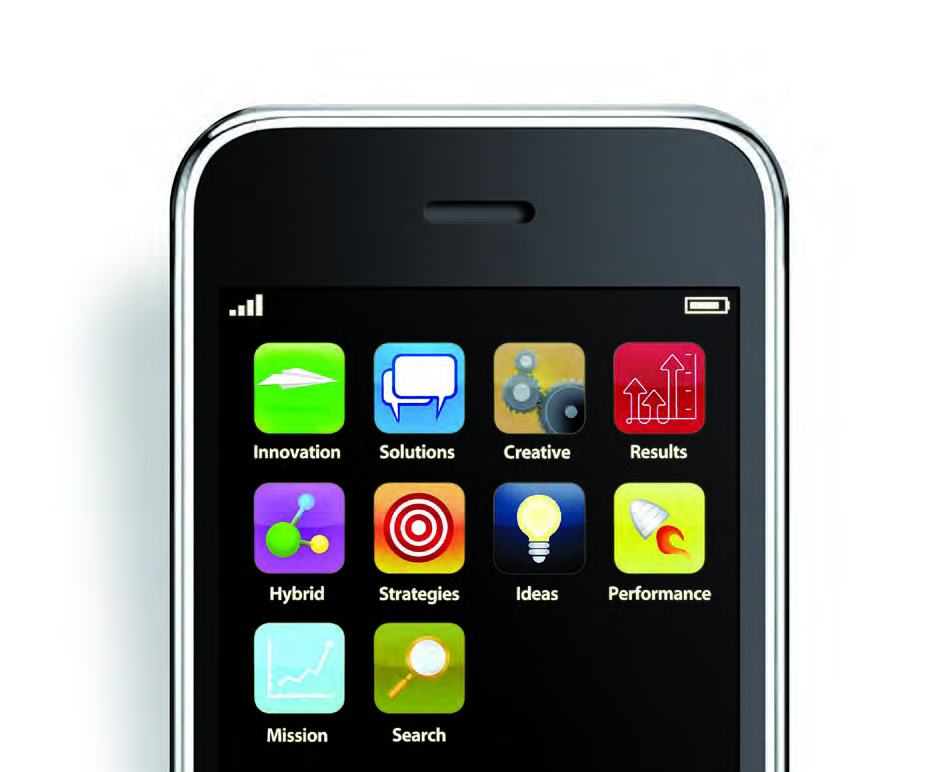
By Jean Engle and Brent Fontenot
In the fall of 2006, Center Director Michael Coats created the new position of chief knowledge officer at the Johnson Space Center. The purpose of the position was to develop a comprehensive knowledge-management program that would identify and capture fifty years of human spaceflight knowledge and make it readily available to current and future generations.
Johnson was the second center to recognize the need for a chief knowledge officer. Dr. Ed Rogers has been the chief knowledge officer at Goddard Space Flight Center for the past six years. Rogers openly shared Goddard’s knowledge management program and learning philosophies with us at Johnson.
The two centers are different and so are their approaches to knowledge capture. Goddard has focused on case-study development and pause and learn; Johnson began with the capture of lessons learned and an infusion process along with a centerwide knowledge-management assessment. As the Johnson program developed over time, however, the centers recognized that their approaches are complementary and their ultimate goals are the same—to use a variety of means to facilitate knowledge sharing.
Creating a Program
We were reluctant to define a knowledge management program without knowing what was already working well. To identify existing knowledge-management activities at the center, Johnson did a comprehensive knowledge-management maturity assessment in the spring of 2007. The four-month process included interviews and focus groups across all Johnson organizations to determine maturity in three key areas: people, technology, and process.
The results were encouraging. Knowledge sharing was deeply integrated into several parts of the organization. The center as a whole saw the importance of managing organizational knowledge but did not necessarily know how to do so effectively.
In parallel with the assessment, the chief knowledge officer spent months benchmarking knowledge management at twelve organizations, including government, commercial, and aerospace entities, searching for best practices, lessons learned, and driving forces for knowledge capture. What we learned dramatically changed our perception of what our own program should entail. Rather than imposing one centerwide process for capturing and sharing lessons learned, for example, we followed the lead of the Department of Energy’s distributed learning methodology, allowing organizations to capture, share, and infuse lessons in ways that worked for their particular cultures. We also learned that information technology can be an enabling capability for knowledge capture and sharing, but should not be the primary focus of a successful knowledge-management program. The most effective knowledge sharing happens person to person.
Guided by the assessment and benchmarking, we defined the Johnson Organizational Learning program and put it in place in May 2008. Key goals included the following:
- To foster a culture of sharing of information, knowledge, and best practices
- To recognize that learning is not uniform
- To capitalize on proven processes and methods
- To appreciate the value of shared collective knowledge
Along with the goals, we established key requirements for each organization:
- Establish expectations for knowledge sharing
- Promote knowledge transfer and collaborative sharing
- Establish local learning processes and procedures for lessons learned, best practices, and transfer of tacit knowledge
- Develop an organizational learning plan consistent with local processes, procedures, and practices
- Identify, document, validate, infuse, and disseminate lessons learned into critical processes
- Provide a point of contact for each organization’s learning activities
The integrating body for organizations to share and learn from each other is the Knowledge Management Steering Committee, comprising representatives from each organization. We carefully considered how to create a structure formal enough to support sharing but not so rigid that it might stifle the flow of information. Encouraging sharing of best practices from group to group is an ongoing challenge. Participation varies depending on the topic for the meetings or information being shared. In general, we see less participation from organizations where knowledge capture and sharing are more ingrained. As at all NASA centers, sharing for the sake of sharing is not part of our day-to-day work. Making it integral to work requires time and focus.
Key Concept
To measure progress, we developed a simple concept to allow us to focus on specific areas and give us an easy way to explain the knowledge management program internally and externally. Three interconnected factors allow for the maximum transfer of knowledge and learning: what you know (tacit knowledge gained through experience, training, etc.), who you know (your social network), and what everyone else knows (explicit knowledge that has been codified and made available in knowledge bases).
We have developed and implemented specific projects for tacit and explicit knowledge. Future plans will focus on the social-network aspects of our program as we explore agency and center collaboration tools such as NASA Spacebook.
Sharing What We Know Through Storytelling
Although codified knowledge is valuable, the people-to-people transfer of knowledge from subject-matter expert to learner provides essential context, filling gaps that explicit knowledge always leaves. Storytelling is one of the most powerful ways to communicate context.
At Johnson, storytelling happens in a variety of ways, under names including “brown-bag lunches” and “lunch and learn.” Although valuable, most sessions have been publicized only by word of mouth, local fliers, or e-mail within a specific workgroup or team. Few are recorded or documented for future use. We wanted to develop a centerwide program that would feature experienced individuals in technical and institutional programs and projects telling stories that are applicable to a large cross-section of the center. Each session includes questions and answers and is videotaped to be available to the center (and anyone else with “nasa.gov” network access).
Associating storytelling with another center or a NASA milestone is one way to increase relevance. In May 2009, just before the beginning of hurricane season, three individuals from the emergency response team at Johnson did a storytelling session on preparing for, riding out, and recovering after the devastation of Hurricane Ike in September 2006. They shared and expanded on lessons that had been captured in the center’s Hurricane Ike report earlier in the year. About fifty-five people attended this event and 225 have downloaded the electronic version of the session.
In July, our storytelling program focused on the Apollo 11 fortieth anniversary events and included multiple sessions with panel discussions featuring subject-matter experts from many Apollo systems and subsystems. Over a three-day period, more than two thousand attended and over a hundred more accessed the online sessions. In August, nearly two hundred people heard Maj. Gen. Joe Engle, NASA astronaut and X-15 pilot, share lessons from the X-15 that were applied to the Space Shuttle—a session presented before the fiftieth anniversary of the first flight of the X-15. This e-mail shows the kinds of valuable connections between people the sessions can create:
First, thank you for your presentation yesterday. It was great to hear you mention the STAs [shuttle training aircraft]. I was the project engineer on the STAs from 1985 to 1995. Anyway, if you have the time, I would like to talk to you about your experiences as they relate to my task to determine crew survival methods for the new Orion and Constellation program. In our case, crew survival starts after all the hazard controls inherent to the design and test of the vehicle have failed, much like an Apollo 13 situation. I start with a bad day and assess what we can do to get the crew home safely given what is available. If this is of any interest to you, please let me know and we can schedule a time to talk at your convenience.
To obtain speakers for our sessions, we have tapped the rich field of experts in the Johnson NASA Alumni League chapter for several of our sessions. In addition, requests for topics and speakers have gone through JSC Today, a daily e-mail with information and tidbits from around the center sent to more than ten thousand recipients.
To help ensure that we are providing a valuable service, we have established an online feedback form that can be used by attendees or those who watch videos of the sessions. The feedback has been excellent and has suggested valuable changes such as adding an outline, moderator, and structure, especially for events with multiple participants.
Although we keep tabs on how many people attend each session and download video or MP3 files, we measure success by how we connect current employees to experts, many of them no longer at the center. After the first session in March 2009, “Wisdom and Lessons Learned from the Johnson Propulsion and Power Division,” the chief for the current propulsion division, William Hoffman, invited the participants back to Johnson to share their knowledge with his entire division. Connecting the newer generations with individuals who were at NASA when the early manned spaceflight programs were being developed is an opportunity for invaluable knowledge transfer.
Sharing What Everyone Else Knows
Responsibility for the center’s lessons-learned program was transferred from the chief engineer to the chief knowledge officer in the spring of 2007. Local learning and sharing were happening more than we had thought. Surveying existing lessons-learned activities at Johnson, the Center Lessons Learned Data Manager identified twenty-seven separate repositories and processes. Collection methods, verification and storage processes, and outputs were often specialized for the division or branch they supported. Rather than change existing practices, we want to support and leverage them as much as possible.
Experience had taught us that a lessons learned process that is separate from how an organization or team learns or operates will not work. During benchmarking, we found anecdotal evidence suggesting that 95 percent of lessons learned are applicable only at the local level. The challenge is to identify and collect the 5 percent that have wider applicability. To capture and share that 5 percent, we created criteria to guide organizations. In the case of the center’s report on Hurricane Ike lessons learned, for instance, we were able to identify, codify, and share broad lessons from organizations including procurement, center operations, and information technology. Submitted to the agency’s Lessons Learned Information System (LLIS), this material was voted the number-one “lesson” in the LLIS for 2009.
An integrated search function lets a user search the more than thirty-five internal and external lessons learned and case-study collections in the lessons learned library at once. In the past, a user would have to identify and search each collection individually or do a global search at the center level, which would return results from hundreds of sources—processes that were too laborious to be of value to most users.
Allowing organizational variation in how lessons are captured and shared while integrating search capability has proven to be more acceptable to the user community than trying to force transfer of lessons from existing systems to a centerwide one.
Where Do We Go Next?
On the horizon, though in its infancy, is an activity modeled after National Public Radio’s StoryCorps project, which we are calling “JSC Voices.” It will give our workforce a chance to produce their own ten- to twenty-minute movies about their NASA experiences. We will provide the platform for sharing firsthand personal experiences by hosting the DVDs on our Web site and advertising them to the center. Our goal is to find new ways to inspire people to record and preserve the stories that matter to them and capture the courage, humor, trials, and triumphs of an incredible range of voices.
Additionally, we teamed up with the Center Shuttle Transition team to capture memories and experiences of the final flights of one of our greatest programs. During each Space Shuttle launch viewing in the Teague Auditorium, we ask employees to take a few moments to share shuttle memories on camera, telling us about the first launch they saw or the feeling of accomplishment that came from seeing the hardware they helped build turned on in space. They provide the memories, and we provide the camera to record them and a way to share the memories with others.
Over time, we have seen that learning and sharing happen differently across a diverse, innovative, and creative workforce. Allowing individuals and teams to transfer knowledge in ways that have meaning to their culture is the most effective path to success.
About the Author
 |
Brent Fontenot has been an aerospace engineer at Johnson Space Center for thirty years. Currently he serves as the lessons learned manager at Johnson, where he also manages the storytelling program. |









